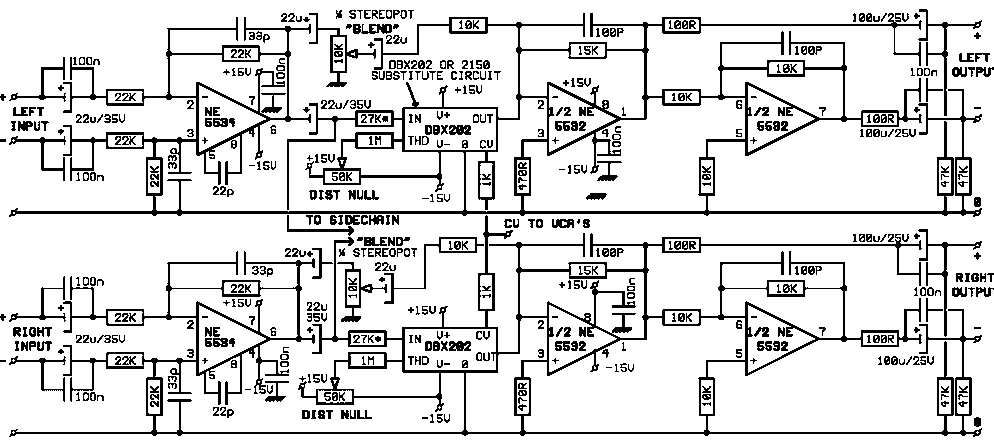matthias
Well-known member
one of my next projects will be a vca compressor like the old dbx boxes and an improved version of the s s l compressor.
for both units I'd like to implement a feature that allows to mix in some of the dry signal.
my first design attempt is this:

regarding this I have some quesitions:
r5 should be a level control (from -inf to 0) for the (dry) input signal.
1) Can I leave out R7 and R6 or if not, how do I determine the value?
2) in case of R5, what would be better here, only a series (variable) resistor leading to the neg. input of OP2 or like in the schematic an attenuator to gnd.
3) can OP2 also be an non-inverting opamp or would this cause phase problems with the output signal of OP1
4) how should I determine the value of R5
thanks,
mat
for both units I'd like to implement a feature that allows to mix in some of the dry signal.
my first design attempt is this:

regarding this I have some quesitions:
r5 should be a level control (from -inf to 0) for the (dry) input signal.
1) Can I leave out R7 and R6 or if not, how do I determine the value?
2) in case of R5, what would be better here, only a series (variable) resistor leading to the neg. input of OP2 or like in the schematic an attenuator to gnd.
3) can OP2 also be an non-inverting opamp or would this cause phase problems with the output signal of OP1
4) how should I determine the value of R5
thanks,
mat





